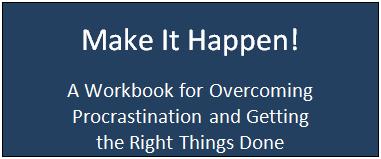 Many people have a list of ambitious projects they plan to complete, such as the following:
Many people have a list of ambitious projects they plan to complete, such as the following:
- Write a bestselling novel
- Run a marathon
- Start a blog and build it up to 10,000 subscribers
- Invest a large amount of money and live off the interest
- Donate a million dollars to charity
I’m a big believer in aiming high. I read somewhere that most people underestimate what they can do in the long run. However, they also overestimate what they can do in the short run. You can set humongous goals for yourself over the long haul, but in the short run, you need to keep things small.
Below you’ll find four ways to achieve your goals by thinking small. The four ways are the following:
- Break Big Projects Down Into Small Action Steps
- Micromovements
- Reward Yourself For Small Achievements
- Kaizen
Break Big Projects Down Into Small Action Steps
When you’re feeling overwhelmed by a large project or goal that you need to tackle, make your action steps smaller and easier. One clue that will let you know that you need to break your goal down into smaller chunks is that you find yourself procrastinating. Procrastination is often caused by the feeling of being overwhelmed.
By breaking big projects down into small action steps, you can accomplish great things. Here are three examples:
Writing a Novel
Harry Sinclair Drago was an American novelist who specialized in historical fiction set in the Southwestern United States. He was a prolific author and over the course of his career he wrote short stories, screenplays, articles, and more than 100 novels.
In fact, Drago wrote more than three full-length novels a year for 30 years. Once a reporter asked him: “How did you write over a hundred books?” And he answered: “Four pages a day”.
Going From Couch Potato to Running a 5K
Another example of the importance of breaking projects down into small steps is “The Couch to 5K Running Plan”. It offers a running schedule to help couch potatoes take up running. The plan has helped thousands to go from running zero miles to running three miles, in just two months.
Josh Clark explains that a lot of people are turned off from running by trying to start too fast. They go out and jog for as long as they can endure right off the bat and wake up the next day with every ache and pain imaginable. Then they wonder why on earth anyone would want to take up running.
If you go here and look at the running schedule provided, you’ll see the following:
- It starts off the first day alternating just 60 seconds of jogging with 90 seconds of walking for a total of 20 minutes.
- Then, gradually, throughout the next nine weeks the jogging time is increased and the walking time is decreased.
- By the end of the two months you’re jogging for 30 minutes straight, which is basically the equivalent of three miles or 5 kilometers.
A person can go from couch potato to running a 5K in just two months by breaking down the task into small, doable steps.
Marketing Your Business
A third example is marketing your business. Suppose that you want more clients for your business, but you’re not doing anything about it. Why? It’s very likely because “find new clients” is simply too large a task, and you’re not sure how to tackle it.
Ask yourself: “What’s the first thing I need to do?” It could be: “Contact leads”. If this task still looks too large, you can make it even smaller: “Identify leads”.
Another item you can add is “Look for networking events I can attend.” You could also add, “Identify former clients and ask for referrals.” These are examples of small, specific activities you can schedule and carry out, rather than staring blankly at the amorphous: “Find new clients”.
Micromovements – Make It Small Enough to Get You Going
If you’re having one of those days in which you just can’t get yourself to move, or there’s a project that you just can’t seem to get started on, try micromovements. Micromovements is a term coined by motivational writer SARK. It consists of itsy-bitsy-teeny-weeny movements.
SARK explains that she’s a recovering procrastinator and perfectionist with a short attention span, so she invented micromovements as a method of completing projects in time spans of 5 minutes or less. She adds the following:
“All of my 11 published books, posters, cards and company exist due to many thousands and thousands of micromovements all strung together. I think of the micromovements as tiny colored beads that have helped me be someone who lives in her dreams instead of talking about them.”
SARK adds that it’s important to write down each micromovement with a day and time. For example, if she wants to create a purple pillow, she would write down the following:
- Call Nancy Wed. 10am ask where she got the great purple fabric
- Thu 11am, put fabric near sewing machine
- Fri 4pm, draw two types of pillow ideas
- Sat 2pm, assemble supplies for 5 minutes
- Sun 5pm sew a pillow cover
Although using micromovements means that you’ll proceed slowly, it’s a much better alternative than never getting started. Just go slow and steady.
Reward Yourself for Small Achievements
Small victories create psychological momentum. Matthew White is the author of “‘The Confidence Bible: the Little Blue Book of Fearless Confidence”. He explains that the principle of using small wins to build psychological momentum was presented in a Ph.D. dissertation at Stanford University in 1977.
When someone praises you, you feel good because your brain produces a chemical called dopamine. When you praise yourself by checking off a completed action step, you get the same physiological result. As you achieve one small win after another, you find it easier and easier to take the action steps that generate the wins.
Basically, it’s about applying Newtonian physics to your task list: if you can get yourself to start ticking off small items, you’ll be on a roll and will continue ticking off items. In addition, giving yourself positive reinforcement after each small achievement will help you even more in keeping the momentum going.
The process to follow is this: break each task down into small action steps; make it easy to identify when you’ve completed each step; reward yourself for each achievement, even if it’s just by acknowledging and congratulating yourself each time you complete an item; repeat.
Kaizen – Continuous Improvement
Kaizen is a Japanese philosophy. It’s based on making little changes on an ongoing basis: always improving productivity and effectiveness while reducing waste. It’s a soft, gradual method and the concept can be applied to any aspect of your life.
In addition, Kaizen is about creating systems and processes, and continuously tweaking these processes to get the best results and to reduce waste. One example is to create a morning routine and modify it slightly every few days to create improved results:
- Do you spend less time in the bathroom getting ready if you keep your shaving cream, tooth brush, and toothpaste on the bathroom counter instead of storing these items under the sink?
- What if you hang a hook by the door and make sure to always leave your keys there when you enter the house so you can easily find them in the morning when you’re leaving the house?
- What if you put coffee and water in the coffee maker the night before instead of doing it in the morning?
- What if you also put an umbrella stand by the door?
Anything can be improved continuously, one small tweak at a time.
Conclusion
Make things easy for yourself:
- Set yourself up to succeed by breaking your projects down into small, manageable steps.
- If there’s a project you’re resisting or if you’re just having a lazy day, allow yourself to move in micromovements.
- Create momentum by checking off small items from your list. Congratulate yourself for each item you complete, however small.
- Also, use the concept of Kaizen to make small, constant changes to your life so that you’re always on the road of continuous improvement.
In order to achieve big goals, think small.


Related Posts:
1. Time Management Secret: Do It Tomorrow
2. Time Investment: Invest Your Time Instead of Spending It
3. Stop Procrastinating Tip: Practice Discomfort
4. The One-Hour-A-Day Formula
5. How to Live a “Hell, Yeah!” Life







 Marelisa Fabrega is a lawyer and entrepreneur. She holds a Bachelor of Science in Business Administration from Georgetown University in Washington, D.C., as well as a Juris Doctor from the Georgetown University Law Center. You can learn more about her
Marelisa Fabrega is a lawyer and entrepreneur. She holds a Bachelor of Science in Business Administration from Georgetown University in Washington, D.C., as well as a Juris Doctor from the Georgetown University Law Center. You can learn more about her 






Comments on this entry are closed.
Your article comes at a time when I have been contemplating a large endeavor. I want to return to a large metropolis which I left because of illness over 25 years ago and offer a needed service to inbound seniors. Much of my offering would be made on a volunteer basis. I ask myself if a move like this would be realistic.